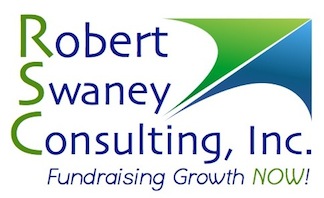Indianapolis, IN -- Robert Swaney Consulting, Inc. (RSC) is very pleased to announce the promotion of Jeremy Hatch to Principal Consultant. Since joining the firm in 2012, Mr. Hatch has played a pivotal role in helping clients nationwide achieve breakthrough fundraising results.
“Jeremy has been instrumental in helping clients achieve immediate and lasting fundraising growth,” Bob Swaney, RSC Founder and CEO, said. “Using RSC’s innovative tools and techniques,
Jeremy has helped more than a dozen RSC clients meet and exceed aggressive fundraising goals, and we’re proud to recognize him as our Principal Consultant.”
 |
| Jeremy Hatch, CFRE |
The Memphis Symphony Orchestra, in partnership with RSC and managed by Hatch, created an extraordinary rebound season in 2014/15, surpassing all fundraising goals by 15% and adding hundreds of new and re-engaged donors to the patron base.
“RSC’s engagement has been key to our turnaround, which is in progress,” said Roland Valliere, President & CEO of the Memphis Symphony Orchestra. “We are ahead of where we expected to be and RSC has been instrumental to that success."
RSC client, the Blue Barn Theatre of Omaha, worked closely with Hatch to launch a $7 million comprehensive fundraising campaign, which included a $5 million new theatre venue scheduled to open this fall, while expanding the institution’s annual fund by 100%.
Prior to joining RSC, Mr. Hatch served as the founding Development Director for the Center for the Performing Arts in Carmel, Indiana, where he built one of the most robust sponsorship programs in the United States. In addition, he has worked on numerous capital and endowment campaigns, including Indiana University Art Museum’s $17 million effort that tripled the organization’s endowment and the YMCA of Greater Indianapolis's $30 million New Visions, Lasting Values campaign. Jeremy’s international work includes Ireland’s Galway Arts Festival, where he assisted in the growth of an expanded sponsorship program, creation of an annual fund, and the development of international partnerships for major project support.
Jeremy Hatch has taught fundraising coursework as Adjunct Faculty at Indiana University and recently completed a six-year board term with the Indianapolis Fringe Festival. He holds both the CFRE certification and the Certificate in Fundraising Management from the School of Philanthropy, along with a B. A. in Theatre and Drama and a Master of Arts Administration from Indiana University.
In his new position, Jeremy will continue providing high-level counsel to RSC’s diverse and growing client base of annual, capital, planned giving, sponsorship, and endowment campaigns to help these organizations achieve superior fundraising success.
# # #
About RSC: Established in 2006, Robert Swaney Consulting, Inc. (RSC) is a national provider of contributed revenue growth strategies, turnkey fundraising direct mail programs, and executive searches for arts and cultural institutions. The firm has offices in Indiana, Michigan, Ohio, and Missouri, serving clients across the country. RSC’s clients include the majority of top-tier U.S. Orchestras.






